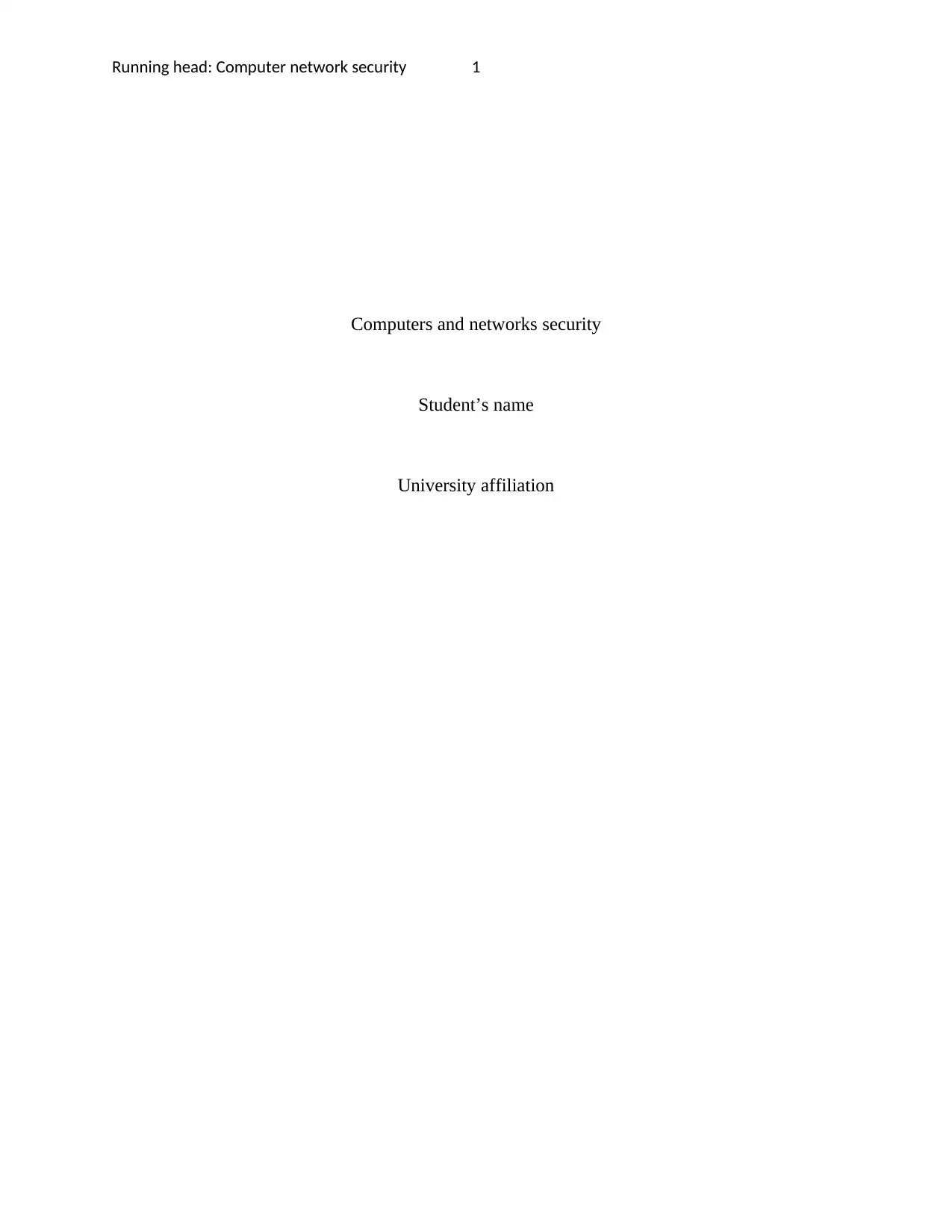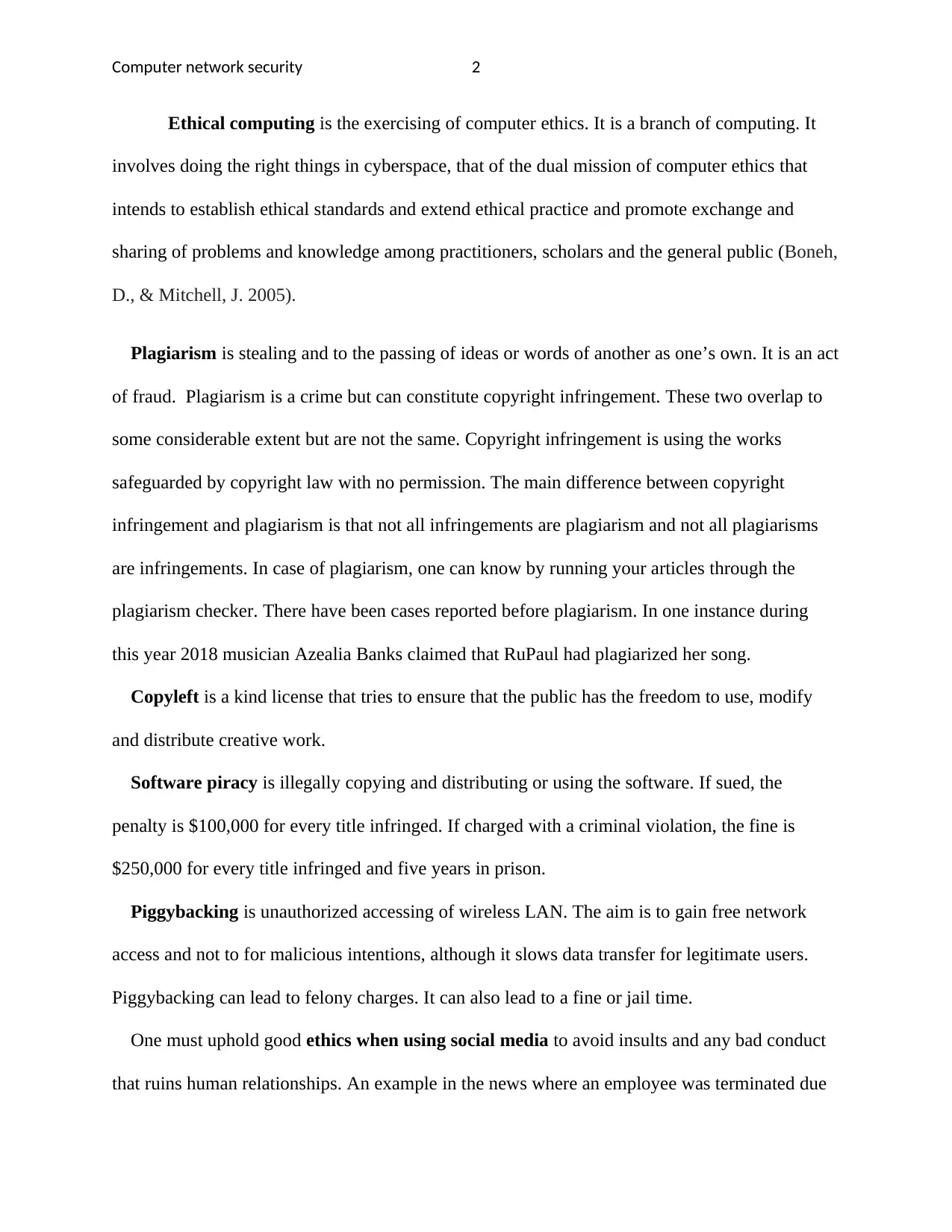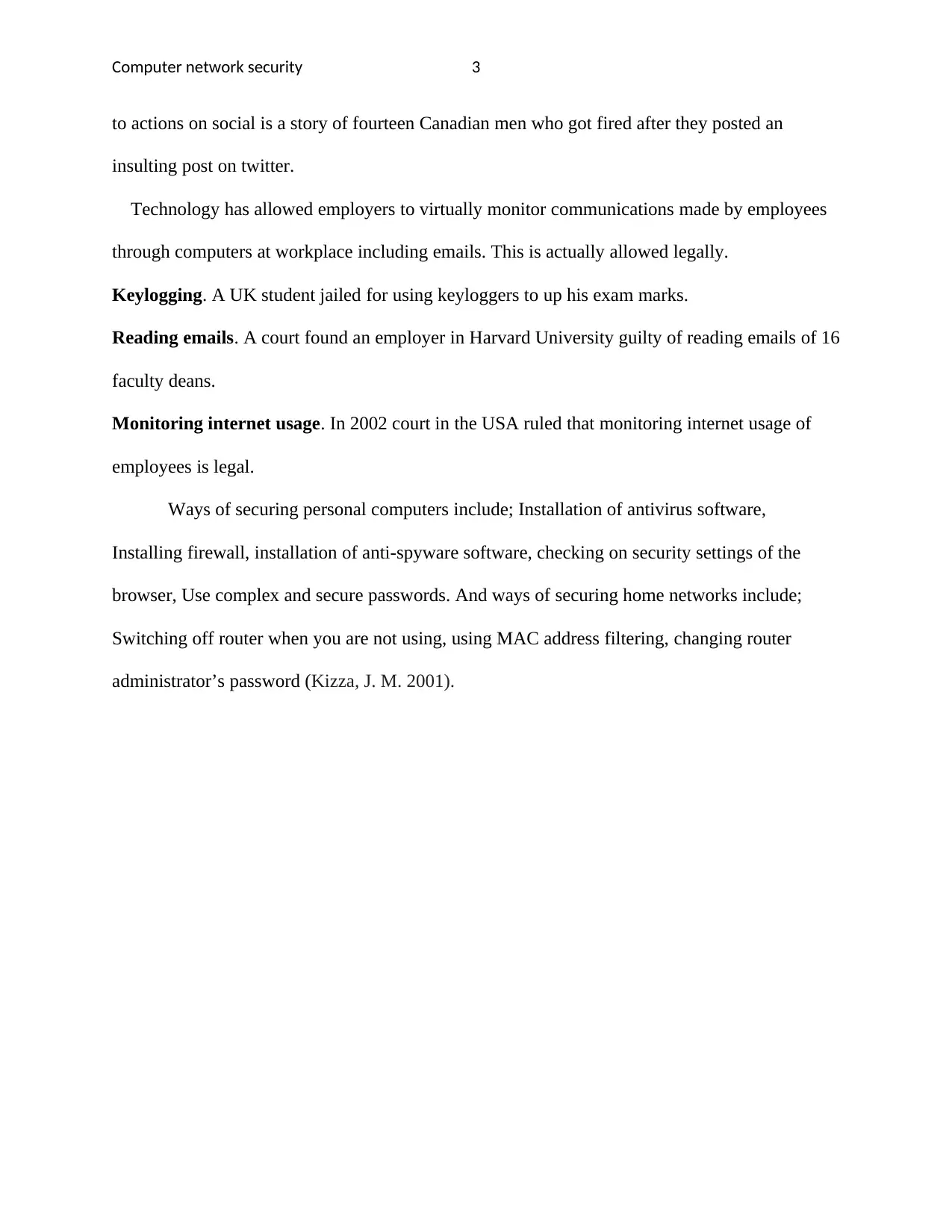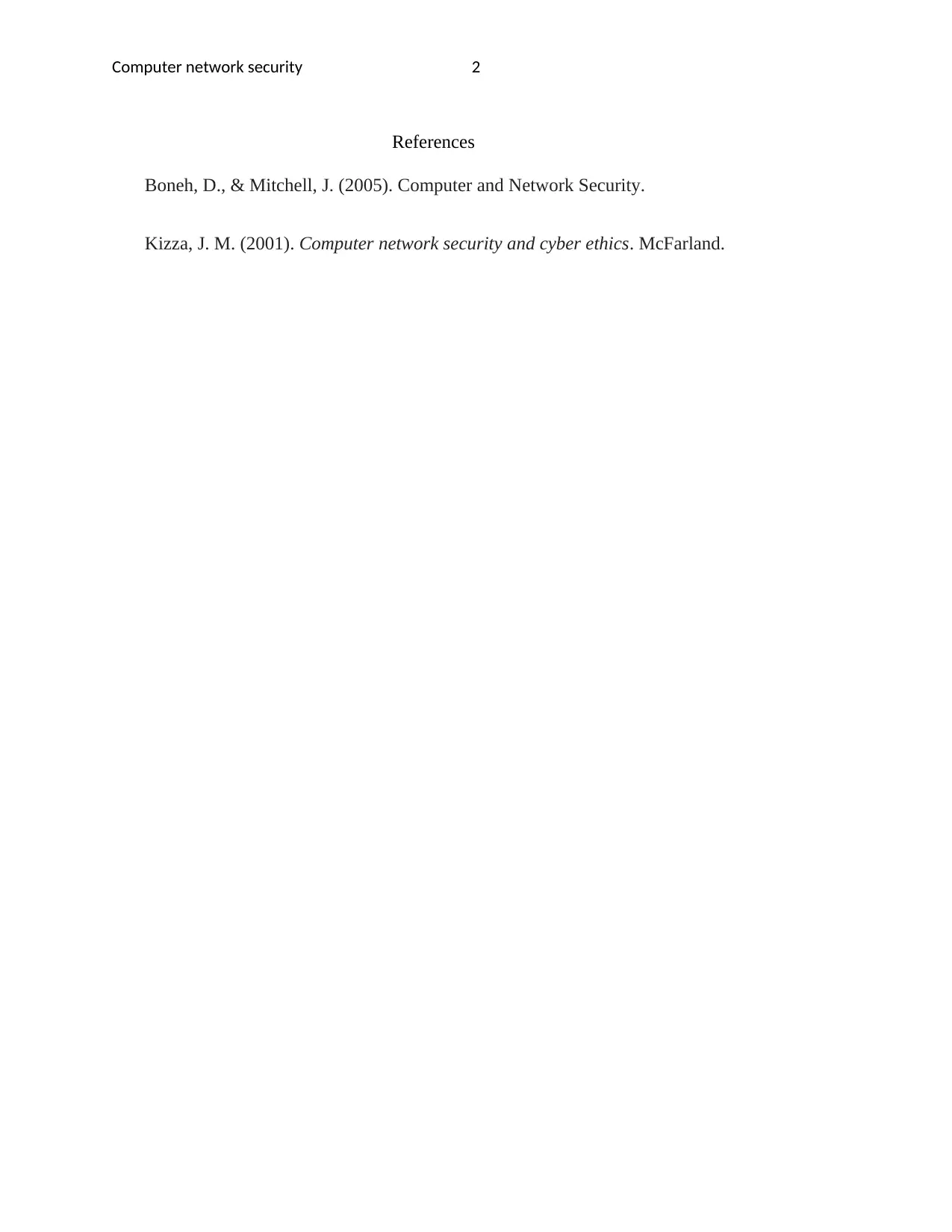IT190M5: Developing a Computer Use Policy Addressing Ethical Issues
VerifiedAdded on 2023/06/11
|4
|591
|402
Report
AI Summary
This report provides an overview of computer network security and ethical considerations within an IT context, specifically addressing the requirements of the IT190M5 assignment. It begins by defining ethical computing and delves into plagiarism and copyright infringement, highlighting their differences and methods for detection, including a real-world example of plagiarism in the news. The report further explains copyleft and software piracy, detailing the associated legal penalties. It also covers the ethical and legal implications of piggybacking, emphasizing the importance of upholding good ethics on social media and the legal aspects of employer monitoring of employee communications. Finally, it provides practical recommendations for securing personal computers and home networks, including the use of antivirus software, firewalls, strong passwords, and MAC address filtering. This resource is available for students to study and use as a guide, with more solved assignments and past papers available on Desklib.
1 out of 4





![[object Object]](/_next/static/media/star-bottom.7253800d.svg)